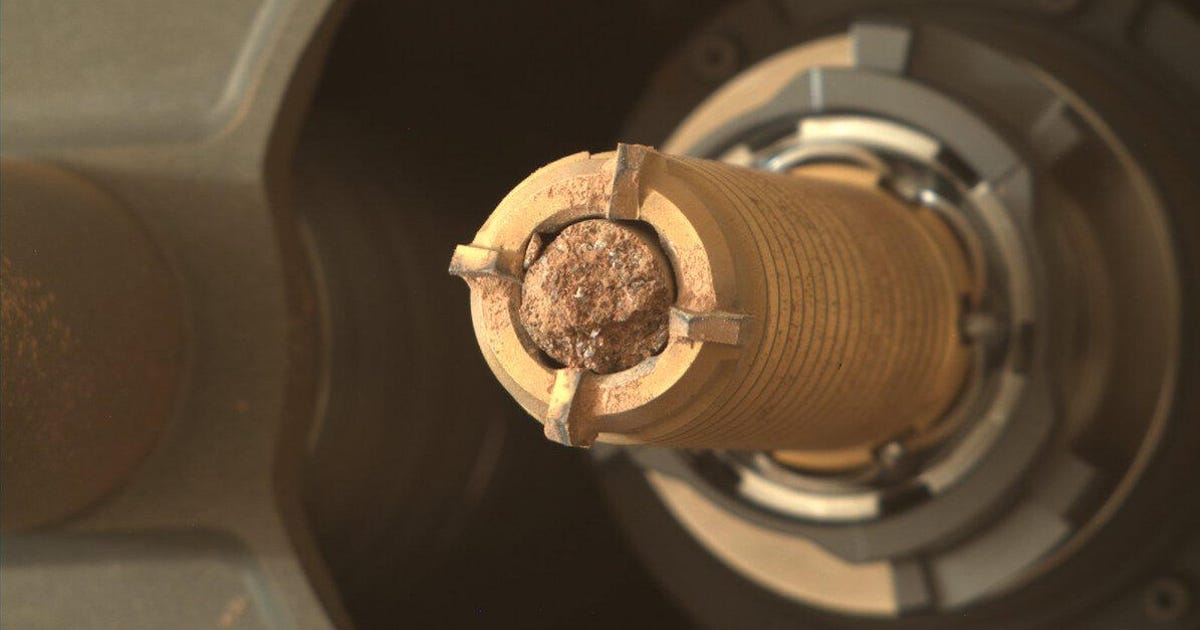NASA’s Perseverance Rover Snaps an Extreme Closeup of 10th Mars Sample
The James Webb Space Telescope is getting all the space glory right now — and rightly so. Its first images have surprised and wowed and dazzled and bewildered which makes it easy to forget we landed a car-sized rover named Perseverance on a planet that lies, on average, around 140 million miles away only a year and a half ago.
Since its arrival in an ancient Martian lakebed, Perseverance has been roaming around, scoping things out and drilling into rocks to extract samples. As of July 6, it had obtained nine.
On Tuesday, NASA revealed an extreme closeup of its latest sample — the 10th — and it’s every bit as interesting as Webb’s images from earlier today. Well, maybe. NASA generally grabs closeups of Perseverance’s samples post-drilling and you can find them in the rover’s raw image database… but this feels particularly special given the rover hit double digits and the sun hit the rock in just the right way.
As NASA notes in its tweet, the samples are about as thin as a pinky finger but that doesn’t mean they’re dense with information. Scientists hope to study the samples in the coming decade, analyzing their chemical composition and maybe even seeking signs of ancient life… provided we can get the samples home. That will be the biggest challenge.
The samples will be stored in the rover’s belly but, eventually, NASA and the European Space Agency (ESA) will send a spacecraft to Mars to collect the cores. It’s expected that Perseverance will drop them on the Martian soil and another rover will pick them up, take them to a rocket and send them back to Earth, like an interplanetary postal service.
As Perseverance has been rolling around the lakebed, engineers at NASA have been scouting for a suitable landing site for the spacecraft. In a blog post on Monday, the agency says they’re looking for a “pancake-flat landing zone with a 200-foot (60m) radius.”
What NASA hopes to find is a place that’s free of rocks and slopes to make the job easier for the planned recovery of samples. At this stage, we’re not entirely sure what the planned recovery rover will look like and when it will get to Mars, but the plan is to bring the samples back at the end of the decade.
There’s another ambitious Mars mission you should keep your eye on in the meantime: The Japanese space agency’s MMX mission will attempt to land on Phobos, Mars’ curious potato-shaped moon, and retrieve samples from its surface. There is some indication that debris blasted from Mars’ face by asteroid collisions could have landed on the moon. The mission is scheduled to return to Earth in 2029.
For all the latest world News Click Here

